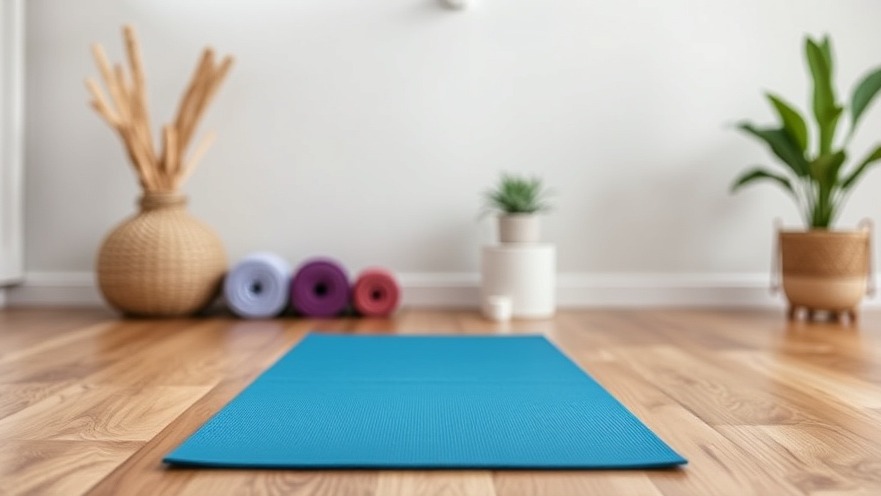
Unlocking the Secrets of Rashmika Mandanna's Fitness Journey
Fitness enthusiasts and fans of Rashmika Mandanna should delve into her inspiring workout regimen. The talented actress, known for her vibrant energy on screen, attributes her sculpted physique to a consistent routine supported by some essential home gym equipment. Curious about how you can transform your fitness journey like Rashmika? Here’s a closer look at the six vital tools she swears by, aimed at helping you stay fit and motivated.
1. Yoga Mat: A Foundation for Flexibility
Rashmika often kicks off her workouts with yoga, emphasizing the importance of flexibility and mindfulness. She prefers the Wiselife Tru Body Alignment Yoga Mat, which features a non-slip surface and extra cushioning for comfort. Whether you are a beginner or a seasoned yogi, this mat supports various poses while ensuring stability. Users have praised its durability and eco-friendly design. Investing in a quality yoga mat is essential as it creates a supportive space for stretching, breathing, and building core strength.
2. Dumbbells: Strength Training at Home
To flaunt those toned arms, Rashmika incorporates Lifelong PVC Hex Dumbbells (5kg x 2) into her routine. These affordable, lightweight dumbbells are perfect for strength training, helping users to build muscle without overwhelming their workouts. Customer feedback highlights their versatility and ease of storage, making them a fantastic choice for anyone aiming for a well-rounded workout at home.
3. Resistance Bands: Adding Versatility to Workouts
If there’s one piece of equipment that champions versatility, it’s resistance bands. Rashmika includes them in her regimen for strength training, providing endless options for exercises that engage multiple muscle groups simultaneously. They're portable and perfect for adding intensity to workouts, whether you're doing squats, bicep curls, or stretches. A set of resistance bands offers a compact and effective way to up your strength game anywhere, anytime.
4. Stability Ball: Core & Balance Stability
To enhance her core stability and balance, Rashmika uses a stability ball. This simple tool challenges your muscles differently compared to traditional exercises, making your routine more dynamic. Stability balls can be used for a variety of exercises such as planks, wall squats, and more, providing a full-body workout while also improving posture and balance.
5. Jump Rope: Cardio for All Levels
No workout is complete without a solid cardio component, and for Rashmika, the jump rope is essential. This compact piece of equipment is not just for child’s play; it serves as a fantastic tool for cardiovascular health while enhancing coordination. Skipping rope routines are known to burn calories quickly, making them an efficient workout choice.
6. Foam Roller: Recovery & Muscle Relief
A well-maintained fitness routine includes recovery practices, and Rashmika emphasizes that with a quality foam roller. It helps relieve muscle tension, aids recovery, and balances your fitness regimen. Foam rolling can alleviate soreness from intense workouts, promoting enhanced flexibility and overall muscle health. Engaging in regular foam rolling sessions is a simple yet effective way to maintain your body’s performance levels.
The Bigger Picture: Why These Tools Matter
Incorporating these six essential pieces of equipment into your fitness routine not only aligns with Rashmika Mandanna's approach but also promotes a holistic view of health, encompassing flexibility, strength, cardio, and recovery. Each item plays a unique role in developing a balanced workout plan that can cater to different fitness levels.
Beyond Equipment: The Mindset for Staying Fit
While having the right equipment is crucial, the mindset behind fitness is equally important. Rashmika emphasizes passion and consistency; forming a routine that fits your lifestyle makes it easier to stay dedicated. Embracing the process is key, and finding joy in your workouts can amplify your efforts to get fit.
Ready to Start Your Fitness Journey?
Inspiration can come from many sources, and Rashmika Mandanna’s fitness journey offers practical insights for those looking to stay fit. By introducing some of her favorite home gym equipment into your workouts, you can embark on a path toward improved health and well-being—one that is relatable and attainable. So gather your workout gear, stay motivated, and watch as you transform your fitness journey!
 Add Row
Add Row  Add
Add 




Write A Comment